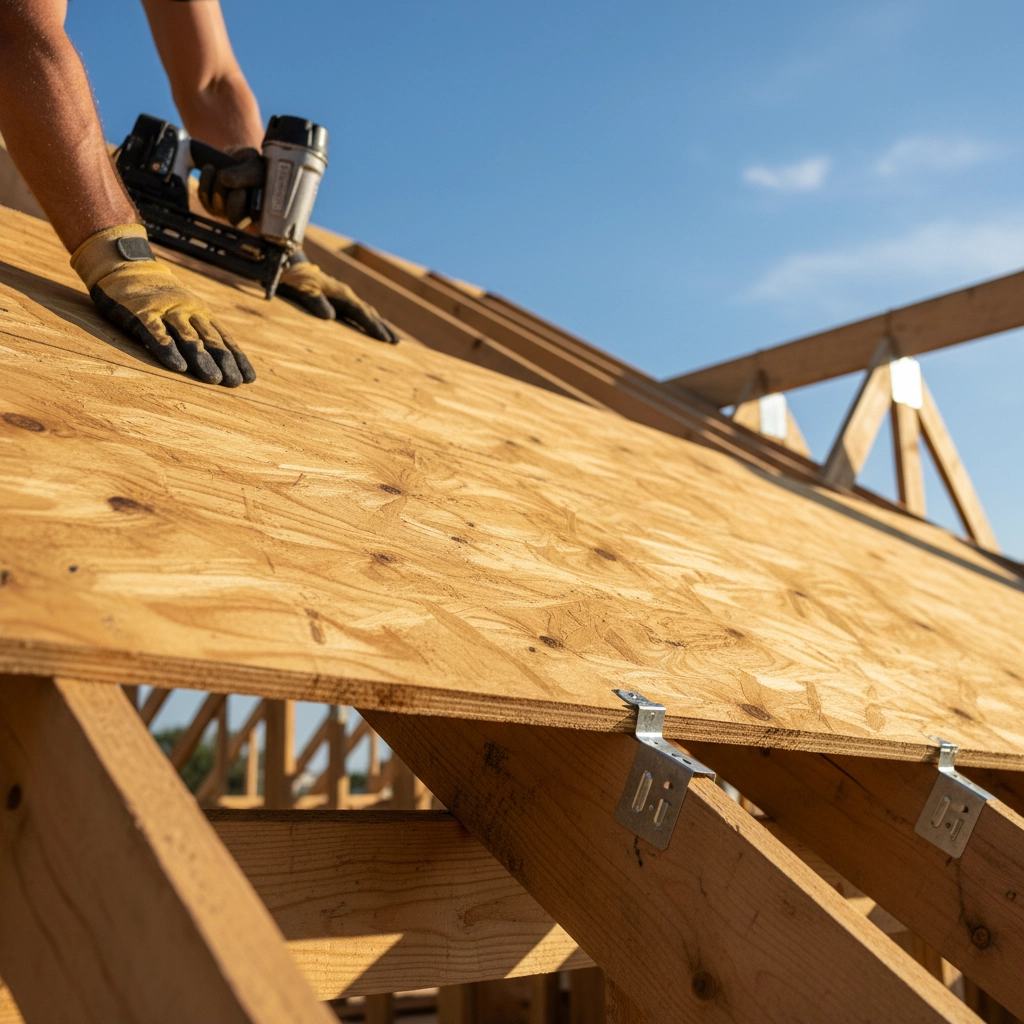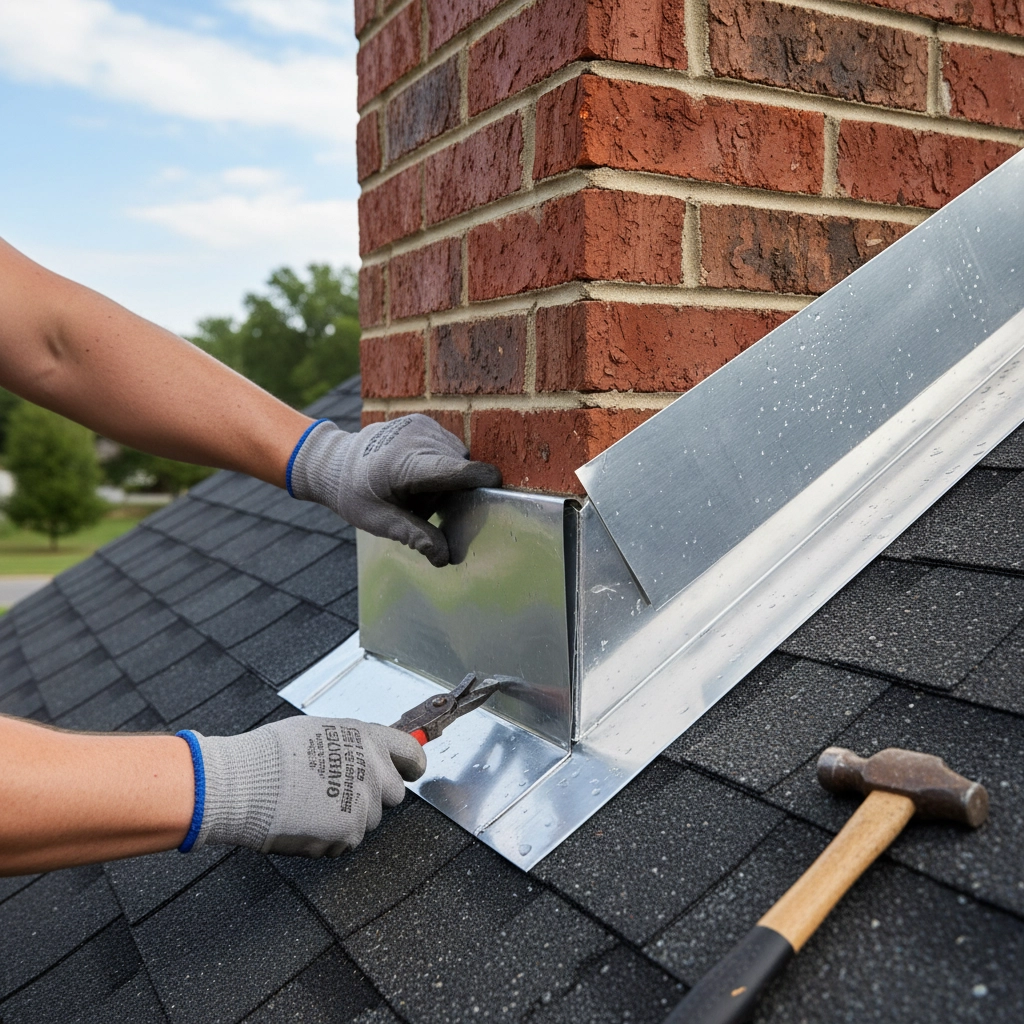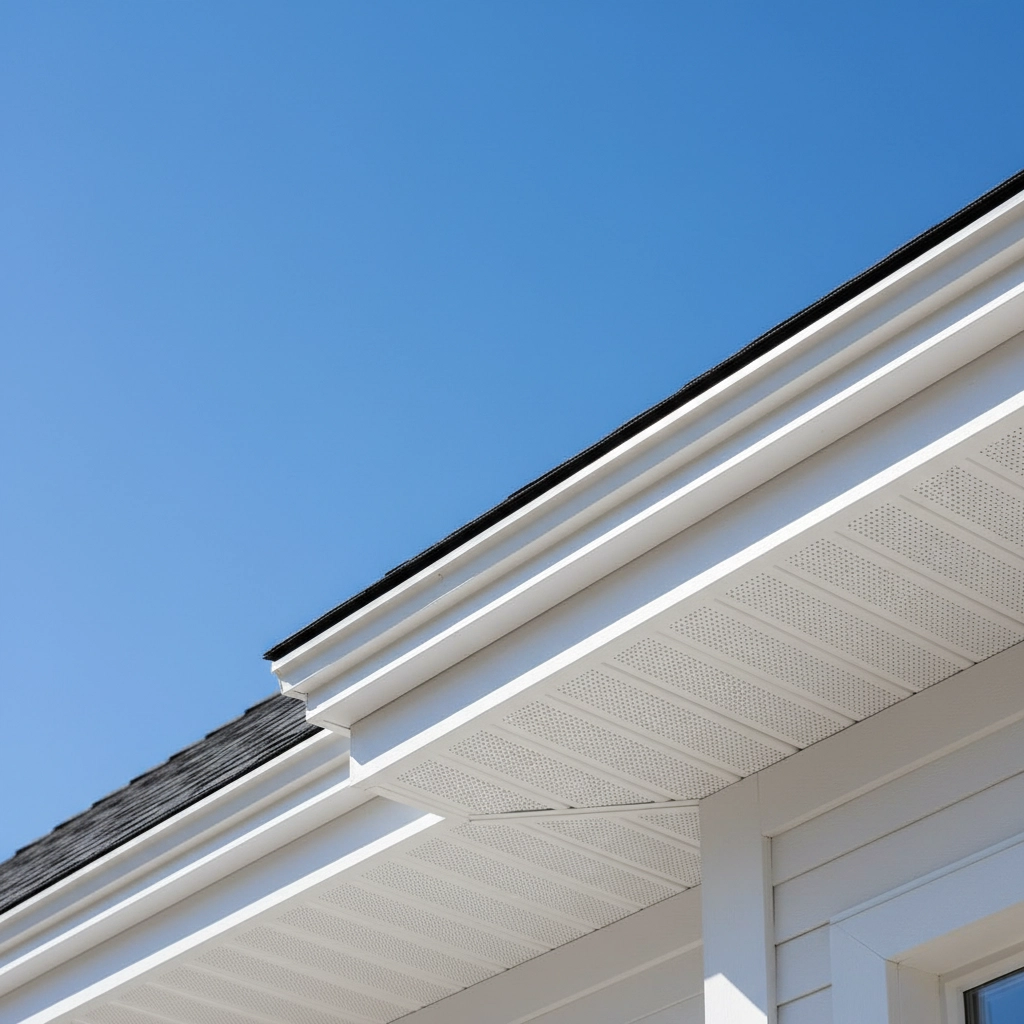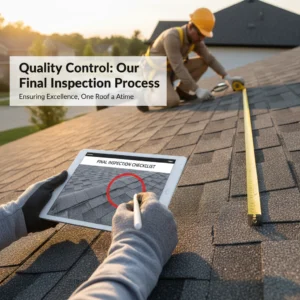
Your roof is more than just shingles sitting on top of your house. It's actually a complex system with multiple components working together to keep you dry, comfortable, and protected from Charlotte's unpredictable weather. Whether you're dealing with our summer thunderstorms or those occasional winter freezes, understanding these key roof parts will help you spot problems early and communicate better with roofing professionals.
Let's break down the 10 most important roof components every Charlotte homeowner should know about.
The Foundation: Decking and Structure
1. Roof Decking (Sheathing)
Think of roof decking as the foundation of your entire roof system. This is the solid surface – usually made of plywood or oriented strand board (OSB) – that sits on top of your roof's frame and supports everything else. In Charlotte's humid climate, quality decking is crucial because moisture can cause cheap materials to warp, sag, or rot over time.
When your decking starts to fail, you'll notice sagging areas, bouncy spots when walking on the roof, or even visible damage from inside your attic. It's the unsung hero that keeps everything else in place.

2. Underlayment
Your underlayment is like a backup goalkeeper – it's the waterproof barrier that sits between your decking and your shingles. This synthetic or felt material is your second line of defense against water infiltration. In Charlotte, where we can get those sudden afternoon downpours, quality underlayment can be the difference between a minor leak and major water damage.
Modern synthetic underlayment performs better than traditional felt, especially in our hot, humid summers. It won't absorb moisture and won't tear as easily during installation or severe weather.
The Visible Protection: Shingles and Surface Materials
3. Shingles
Obviously, shingles are what most people think of when they picture a roof. These overlapping pieces create your home's primary barrier against rain, wind, and sun. In Charlotte, asphalt shingles are the most popular choice because they handle our climate well and offer good value.
But here's what many homeowners don't realize: not all shingles are created equal. Higher-quality shingles can better withstand our intense summer heat and occasional hail storms. They also tend to maintain their color better under our strong UV exposure.
Water Management: The Critical Components
4. Flashing
Flashing is thin metal (usually aluminum or galvanized steel) installed around roof penetrations like chimneys, vents, and skylights. It's also used where different roof planes meet. Think of flashing as your roof's caulk – it seals gaps where water might otherwise sneak in.
In Charlotte's rainy season, failed flashing is one of the most common causes of roof leaks. The metal expands and contracts with temperature changes, and over time, the sealant can crack or the metal itself can develop holes.

5. Valleys
Valleys are the V-shaped channels where two roof slopes meet. These areas collect a lot of water runoff, making them particularly vulnerable spots. In Charlotte, where we can get heavy rainfall in short periods, properly installed and maintained valleys are essential.
There are different ways to handle valleys – some use metal, others use shingles in a woven or closed-cut pattern. Each method has its pros and cons, but they all serve the same critical function of channeling water away from your home.
6. Ridge
The ridge is the highest point of your roof where two slopes meet. This area needs special attention because it's exposed to the most weather and requires proper ventilation. Ridge vents are often installed here to allow hot air to escape from your attic – something that's particularly important during Charlotte's sweltering summers.
A properly ventilated ridge helps prevent ice dams in winter (yes, we occasionally get them in Charlotte too) and reduces cooling costs in summer by allowing hot air to escape naturally.
The Finishing Touches: Trim and Edges
7. Fascia
Fascia boards run along the edge of your roof and serve multiple purposes. They provide a finished look to your roofline, support your gutters, and protect the exposed ends of your rafters from weather damage. In Charlotte's climate, fascia boards are particularly susceptible to moisture damage and carpenter ant problems.
Quality fascia installation includes proper ventilation and moisture barriers. When fascia starts to rot or pull away from the house, it can cause gutter problems and allow pests to enter your home.
8. Soffit
Soffit is the material that covers the underside of your roof's overhang. While it might seem like just a cosmetic feature, soffit actually serves important functions. It provides ventilation for your attic (crucial in our hot climate), protects exposed rafters, and gives your home a finished appearance.
Vented soffit allows cool air to enter your attic while ridge vents let hot air escape, creating natural air circulation that can significantly reduce cooling costs during Charlotte's long summers.

9. Drip Edge
Drip edge is a metal strip installed along the edges of your roof. It directs water away from the fascia and into the gutters, preventing water from getting behind your gutters and causing rot or pest problems.
While building codes in many areas require drip edge, some older Charlotte homes don't have it. Adding drip edge during a roof replacement or major repair is always a smart investment, especially given our area's rainfall patterns.
10. Gutters
Last but definitely not least, gutters collect water from your roof and direct it away from your foundation. In Charlotte, where clay soil is common and can cause foundation issues when oversaturated, properly functioning gutters are essential.
Your gutters work hand-in-hand with all the other roof components. If your shingles, flashing, or valleys aren't working properly, your gutters will be overwhelmed. Conversely, clogged or damaged gutters can cause water to back up and create problems with other roof components.
Why Charlotte's Climate Makes These Components Even More Important
Our local climate puts unique stresses on roofing systems. Summer temperatures regularly reach the 90s, creating thermal expansion and contraction that can stress seals and fasteners. Our humidity can promote mold and algae growth, particularly on north-facing roof sections that don't get as much direct sunlight.
Charlotte's thunderstorms can bring heavy rain in short periods, testing your roof's drainage capacity. And while we don't get severe winter weather often, those occasional ice storms can reveal weak points in your roofing system.
"Understanding your roof components isn't just about being an informed homeowner," says roofing industry expert Mike Holmes. "It's about protecting your biggest investment and keeping your family safe and comfortable."
Regular Maintenance Makes the Difference
Each of these roof components requires periodic inspection and maintenance. Some warning signs to watch for include:
- Curling or missing shingles
- Granules collecting in gutters
- Water stains on interior walls or ceilings
- Damaged or loose flashing around chimneys and vents
- Sagging rooflines or gutters
- Excessive moss or algae growth
The good news is that understanding these components helps you identify problems early, when repairs are typically less expensive and less disruptive.
Professional Inspection: Your Best Investment
While it's good to understand these components, having a professional inspection is the best way to assess your roof's condition. A qualified roofer can spot potential problems that aren't visible from the ground and recommend preventive measures that can extend your roof's life.
At Best Roofing Now, we've been helping Charlotte homeowners understand and maintain their roofing systems for years. We know how local weather affects each component and can help you prioritize maintenance and repairs based on your specific situation.
Ready to get a professional assessment of your roof's condition? Contact us today for a free roof inspection. We'll examine all ten of these critical components and provide you with a detailed report on your roof's health, along with recommendations for any needed maintenance or repairs.
Your roof protects everything you value most – isn't it worth making sure all its parts are working together properly?






